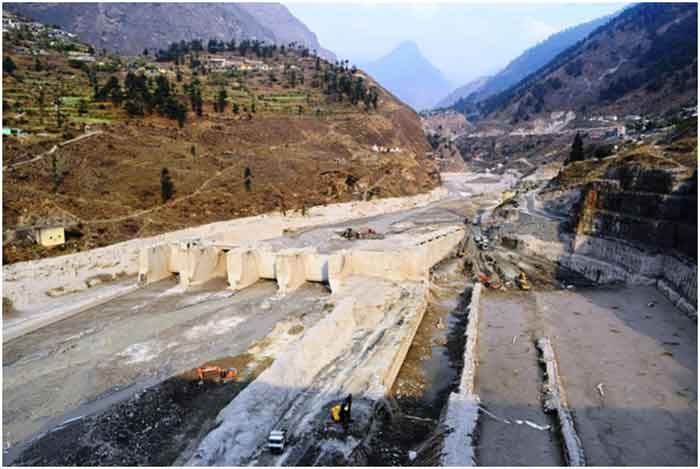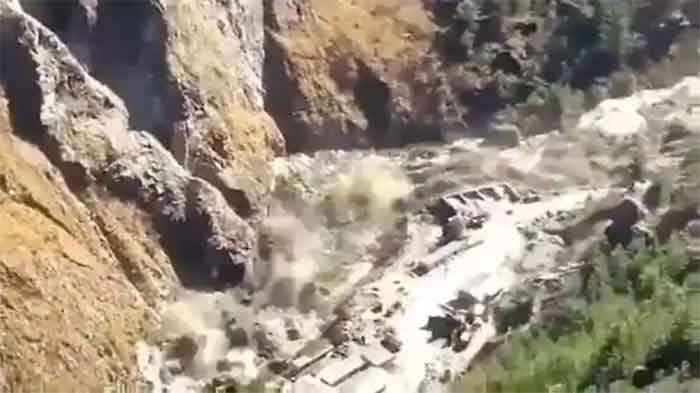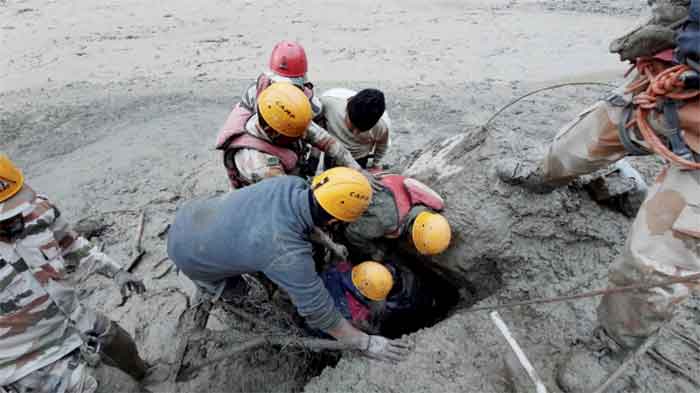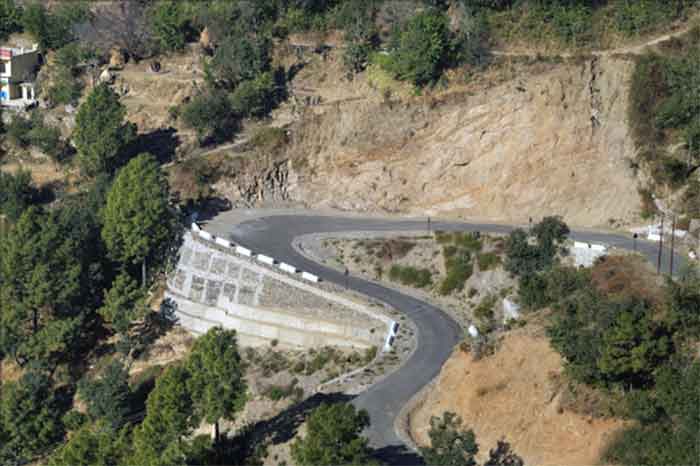
Disaster struck Uttarakhand’s Chamoli district on 7 February 2021 morning after a portion of the Nanda Devi glacier broke off. The sudden flood in Dhauli Ganga, Rishi Ganga and Alaknanda tributaries of the Ganga caused death of over 50 persons and nearly 150 workers missing till 15 February, 2021. Most were workers in different projects in the area, along with some local villagers, and another 150 or so remain missing. Many workers are feared trapped inside the tunnel of the badly damaged under-construction ADB-funded 520 MW NTPC Tapovan hydro-electric project on the Dhauliganga river. The small Rishiganga 13.2MW hydel project on the Rishiganga river, about 4km upstream near the village of Raini where the famous Chipko movement started, was completely destroyed
The Chamoli tragedy brings the memory of the June 2013 Kedarnath flash floods in Mandakini river from melting of the Chorabari glacier and resulted in death of nearly 5,000 people. These tragic events show that more than ever, we need a development strategy for the Himalayas that takes into account the vulnerability of the region and the need for environmental protection. There is no doubt that the fragile Himalayan ecosystem needs economic growth. But this development cannot come at the cost of the environment. A different development strategy is required that is based on sustainable use of the region’s important resources for development and local livelihood security.
Fragile Ecosystem
Himalayan mountain range stretching an area of 741,706 sq. Km is home for rivers- Indus, Ganges and Brahmaputra in India, China, Pakistan, Nepal, Bangladesh . In northern India the Ganges basin provides irrigation for 156,300 hectares of agricultural land. Apart from this water that flows from high glaciers and mountains is a rich source for generation of hydel electricity. This resource has to be discussed, both in terms of its opportunity also a threat to its ecology and economy. Currently, there is a mad rush to build run-of-the-river projects and dams across the region. The four countries- India, Pakistan, Nepal and China of the Hindukush Himalayan region have a hydroelectric potential of 334 GW. All Himalayan states are awarding hydroelectric projects to private companies at a breakneck speed—Uttarakhand on the Ganga basin alone has identified projects adding up to nearly 10,000 mw of power and plans for 70-odd ventures.
Power generation is a huge source of revenue generation for the state, but it comes at the cost of destroying lives, livelihood, and an entire ecosystem. Himalayas is a major biodiversity hot spot in the world. As a an agricultural scientist I can reveal some data- – Himalayas are home for 10,000 plant, 300 animal, 977 bird and 269 fish species. Of which due to excessive human intervention, deforestation and diversion of rivers 31.6 % plant, 12 % animal, 33 % fresh water fish and 15 % bird species are already disappeared from the planet earth.
Despite growing climate threats rush in large scale privitisation of natural resources like rivers as part of neoliberal reforms led to a hydropower boom from 2000, with public rivers contracted out to private investors with government financial support and tax breaks. As part of implementation of neoliberal economic policies community assets & resources like rivers are converted to commodities and gifted away cheaply to crony capitalists for construction of hydel power projects. India’s 2008 hydropower policy gave hydro developers concessions to private companies that insulate them from risk and help them maximise profit.
During the last decade Uttarakhand government had given approval to the construction of over a dozen hydroelectric projects (HEPs) mostly in private sector. The state also has 17 major HEPs – including the one involving India’s tallest dam in Tehri on the Bhagirathi, Maneri Bhali HEP (Stage I and II), Chilla HEP, and Chibro HEP. In neighboring Himalayan state Himachal Pradesh also government recently signed MoUs for five mega projects in Lahaul, home to over 100 glaciers, including Himachal’s largest glacier Bada Shigri, with SJVNL and NTPC. Nearly 16 mega-hydel projects are proposed for the Chenab basin, which has a highly sensitive and fragile ecosystem, in Lahaul and Pangi valley with combined power generation of over 5,000MW.
Chipko agitation and Forest rights
The Chipko movement or Chipko Andolan, was a nonviolent social and ecological movement by rural villagers. Started in 1973b in Dehradun district of erstwhile united UP, and now Uttarakhand), quickly spread throughout the Indian Himalayas. Women protested commercial logging and deforestation by hugging totrees. Throughout the 1980s many protests were focused against onstruction of on the Tehri dam. Various forest peopples struggles including Chipko andolan resulted in enactment of forest conservation act 1980 and 2006 forest rights act endowing rights to tribals people the custodians of forests
Not heeding to expert opinions
Neglect of two major aspects – climate change and thoughtless infrastructure coupled with poor quality of construction projects in the region contributed to Uttarakhand and similar disasters in mountain areas in India especially in the Western Himalayas. It is widely acknowledged that man-made global warming has resulted in rapid melting and shrinking of glaciers along with melting of polar ice caps.
Scientists and experts strongly believe that over-exploitation of rivers and rampant damming for hydroelectric projects (HEPs) could be one of the big factors responsible for the Chamoli disaster. The Char Dham committee was not alone in its view on hydro projects in the fragile Himalayan ecosystem. Also an expert committee of the Supreme Court on the 2013 Kedarnath deluge had also warned the authorities not to construct any hydropower plant in the upper Himalayas. The Kedarnath expert committee had warned about the excessive exploitation of vulnerable regions and the need to re-study and re-evaluate the Hydel energy projects (HEPs) of Uttarakhand. The report also objected to HEPs at an altitude of over 2000 metres. It stated that the ‘river-bed profile’ across the major HEPs of Uttarakhand has changed significantly, suggesting the possibility of disasters in future.
Not heeding to all warnings of the experts, rampant construction was carried out in the sensitive zones even after the 2013 Kedarnath and now the present Chamoli deluges. Notably, two dozen hydropower plants of Uttarakhand were rejected by the Supreme Court after the expert panel report,” said Hemant Dhyani, member of the Char Dham committee.
Un lit villages
Surprisingly despite the governments much advertised success in Despite the Union government’s recent achievement in provision of 100% electrification of all villages in Tehri region only 50 percent are electrified. History shows that construction of large dams apart from serious damage to local eco system uproot local population and affect their livelihoods. As there is a problem in electrification of remote mountainous regions Small hydropower projects (below 25 MW) are preferable with out damaging the local eco systems.
The floods in Uttarakhand were exacerbated because of poor quality construction of hydropower projects by inexperienced private players. These projects must be reviewed or many scrapped. The policy for water-based energy in the Himalayan eco system needs to be carefully balanced so that growth does not come at the cost of the environment and livelihood security of local population.
Dr. Soma Marla is a senior Principal Scientist with Indian Council for Agricultural Research, New Delhi.
The views expressed are author’s personal and do not relate to any other organization.
GET COUNTERCURRENTS DAILY NEWSLETTER STRAIGHT TO YOUR INBOX















































